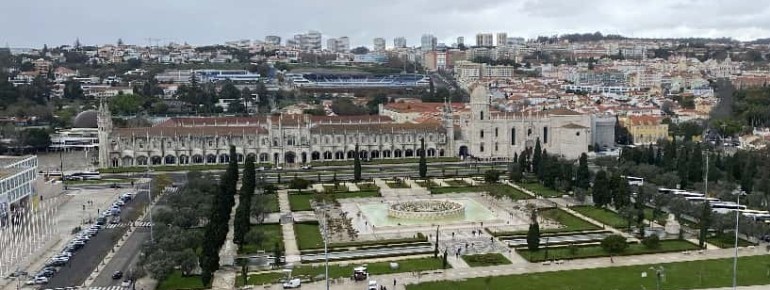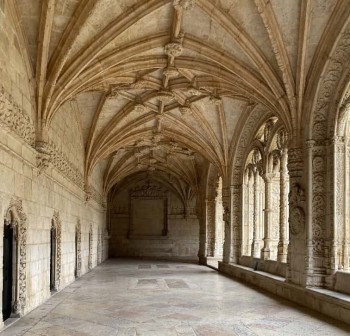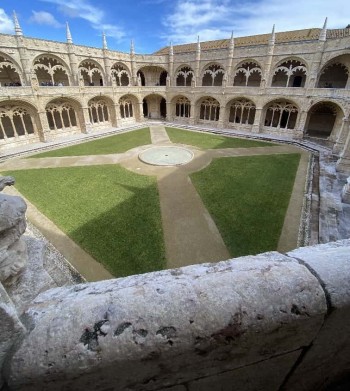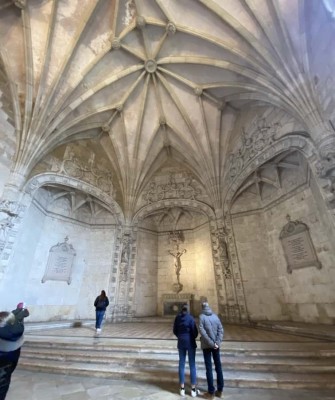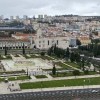Contents
Description
The Mosteiro dos Jerónimos is not only one of Portugal's most important buildings, but also a fascinating place for anyone who wants to immerse themselves in the golden age of discovery. Listed as a UNESCO World Heritage Site since 1983, this Manueline masterpiece in the Belém district stretches over 300 meters and impresses with its richly decorated limestone façade full of maritime symbols. Particularly spectacular are the 32-meter-high south portal with the figure of Henry the Navigator and the west portal with the statues of King Manuel I. The two-story cloister with its filigree decorations and oriental elements is considered one of the most beautiful in Europe.
Church of Santa Maria and royal tombs
The three-nave hall church of Santa Maria de Belém impresses with its vaulted ceiling without supporting columns, which even survived the 1755 earthquake unscathed. Important figures are buried inside: Vasco da Gama in a marble sarcophagus decorated with maritime symbols, opposite the poets Luís de Camões and Fernando Pessoa. The royal tombs of Manuel I and João III with their wives are enthroned on ornate marble elephants. Visitors can also explore the former refectory with its magnificent azulejos, the old library, and chapter houses. The side wings house the Maritime Museum and the Archaeological Museum.
Culinary heritage and political significance
The monks of the Hieronymite monastery invented the famous Pastéis de Nata because they used egg whites to starch their clothes and had to use up the excess egg yolks. After the dissolution of the order in 1834, they sold their secret recipe to the neighboring sugar factory. Just a three-minute walk from the monastery, visitors can still enjoy this specialty made according to the original recipe at the Confeitaria Pastéis de Belém.
Historical Information
King Manuel I laid the foundation stone for the monastery in 1502 to honor Vasco da Gama's successful voyage to India in 1498 and to give thanks to the Virgin Mary. Financed by the enormous revenues from the spice trade, the building symbolizes the height of Portuguese power. Five important architects, including Diogo de Boitaca and João de Castilho, worked on this masterpiece for over seven decades. The monastery was donated to the Hieronymite Order, whose monks lived here until 1834. It was one of the few buildings to survive the great earthquake of 1755 almost unscathed and is now Portugal's most visited tourist attraction.
Interesting facts
- The day pass at Mosteiro dos Jeronimos - Lisbon Monastery is €18 making it one of the 3 cheapest tourist Attractions in Portugal.
How to get there
By car
There are paid parking spaces near the monastery.
By public transport
Take tram line 15 or 18 to the “Mosteiro Jerónimos” stop, which is right in front of the monastery. Alternatively, take the regional train (Linha de Cascais) to Belém station, from where it is about a 10-minute walk.

